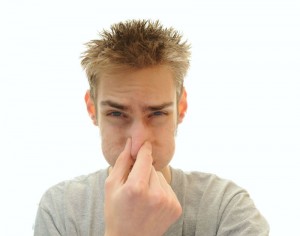What To Do About a Smelly Chimney
When you have a smelly chimney it’s easy to know what to do…CALL A PROFESSIONAL CHIMNEY SWEEP. Chief Chimney Services has been serving residents of Long Island and curing smelly chimney issues in Suffolk County since 1983.
On those oh so familiar hot humid summer days, when your nose connects with that foul pungent odor from your fireplace and chimney, hear warning bells in your mind alerting you that something needs attention. Just like the warning tone your ears hear when your fire and carbon monoxide alarms go off, when your nose detects that putrid smell it’s time to call your chimney professional.
Stinking chimneys can be caused by a single problem or a combination of several. Most likely the cause of your smelly chimney won’t be apparent to the naked eye, and even if you forsook your own safety and climbed on the roof, you wouldn’t be able to see far enough into your chimney to locate the problem. Smelly chimneys occur when there is mold growing or water seeping in your chimney, a build-up of creosote, nesting and decaying animals and birds, all of which are complicated by negative air pressure in your home.
Mold remains one of the top health hazards and special care must be given not only to remove it, but also to prevent its re-occurrence. A common misconception is that bleach is a mold inhibitor, which it is not. Mold can exacerbate breathing and pulmonary issues and cause severe health issues. It spreads quickly and needs prompt attention. Seeping moisture breeds mold. A professional chimney sweep will locate the source of the moisture and correct the problem and remove the existing accumulation; both are necessary to solve mold issues and their subsequent odors.
Your chimney presents an attractive living space for birds and rodents as it is warm, dry, and protected from predators. The troubles occur for when the animal droppings build in the chimney and/or they die inside. Both the decaying bodies and parasites the carcasses attract linger inside your chimney. It is not only unhealthy, but it also blocks proper airflow and causes an awful stench. Adding further to the problem is the fact that in many communities, nesting birds cannot be disturbed. Part of the training professional and certified chimney sweeps receive is how to prevent wildlife from turning your chimney into public housing in the first place and what to do if they have while conforming to wildlife protection laws.
Downdrafts present their own issues and causes of smelly chimneys. The Professional Home Inspection Service wants homeowners to recognize, “While a mild smoke odor is a minor problem, the issue can be very serious if the same thing occurs with naturally drafting gas appliances. The same negative pressure could be drawing combustion gases including carbon monoxide back down the utility chimney, posing a very unhealthy situation. If this problem is a possibility in your house, make sure your carbon monoxide detector is in good working order, and call in a professional for further assessment.”
Professional chimney technicians will pro-actively troubleshoot the potential causes of a smelly chimney and remedy them during their annual inspections. Built up creosote, along with all of these causes of smelly chimneys can be identified and corrected by following the guidelines recommended by the Chimney Safety Institute of America (CSIA) for annual chimney inspections and cleaning.
Remember a smelly chimney is a warning for you to call your chimney professional! Chief Chimney Services is here for homeowners on Long Island.

